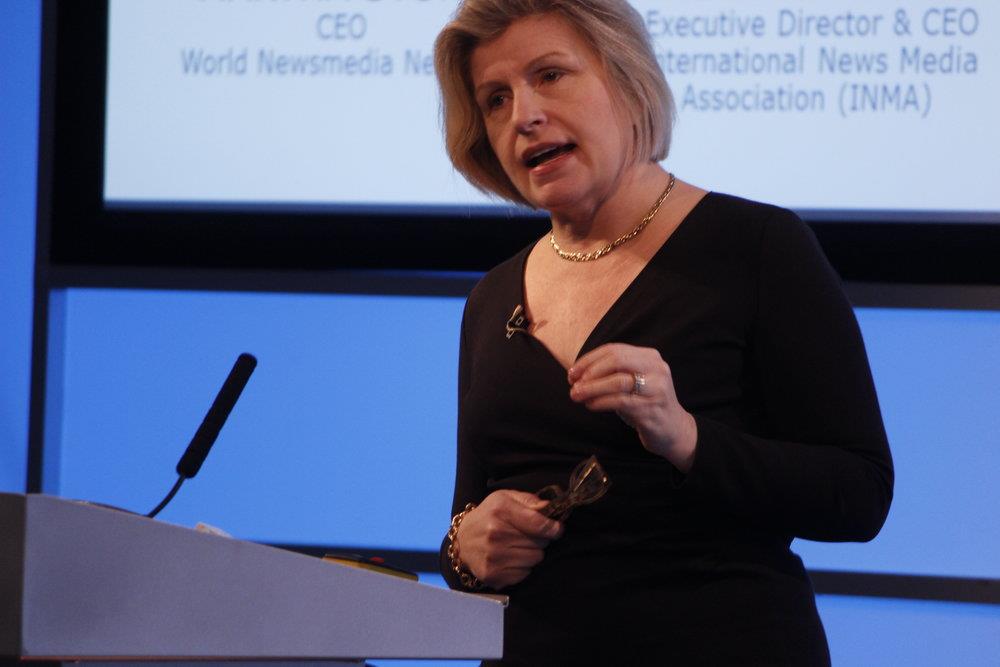How to innovate

***The World Congress takes place from 12-14 November in Las Vegas. Get your tickets by registering here.***
One of the key issues for businesses looking to innovate is how to manage the process in a way that ensures it is controlled. All of our experts suggest that a strong structure and clear process are essential to getting this right.
Martha Stone Williams, CEO of World Newsmedia Network, agrees that process is important.
“Innovation is a process,” she says. “It’s not like you click your fingers one day and think: ‘Oh, let’s innovate today and then we’re done’. You’re never done with innovation because the landscape demands that we continue to create products, work as a team to solve the problems we have, using cross-departmental teams to figure our the solution – using editorial, data scientists, marketing and whichever other teams need to be involved. More and more media companies are now doing that, but it’s a fairly new thing for them to think in that way.”
 |
Martha Stone
Of course, such approaches allow for clearer measurement of success and better understand of whether innovation is actually driving the organisation forward.
“Every strategy that a media company takes on, every product we develop, everything we take to market, has to tie up with KPIs. That is a built-in necessity to make sure we are going in the right direction,” adds Stone Williams. “If your objective is to engage your readers more, or to sell more subscriptions, or to retain your existing subscribers, all that has to tie up with KPIs and be under constant review – and the way to do that is through data. That is my specialty and I talk to a lot of data scientists about the value of data in helping ensure businesses are on the right track with their objectives. Their job is to show the C-level executives who are making decisions about strategies what is working and what isn’t working.”
Another expert, from a major global publisher, agrees:
“Our approach to innovation, from a technological point of view, is handled by a dedicated team which sits across print and digital – but all team members are encouraged to embrace innovation,” she says.
“From a technological standpoint, innovation comes out of the innovation group. If we have an idea or an advertiser has an idea, we go to them and they help us execute it. That innovation team is working across platforms. It’s working with the digital platforms to make sure the experience in digital is backing up what we’re doing, and the print team works on it as well.”
Robin Govik is chief digital officer at MittMedia in Sweden. His business also has a structured approach to innovation. However, he adds that aligning innovation to business goals is equally as crucial.
 |
Robin Govik
“While planning and research are important,” he says, “I would say the most important thing when it comes to innovation is the business goals – ‘where do we want to go as a company, what’s the progress that we need to make and what’s the timeframe?’”
Despite that, he says that even when projects do not fully deliver the required results, it is possible to take success from them.
“Acceptance of failure is also important when it comes to innovation,” he says. “What often happens is that journalists and others commenting on whether an innovation project has been successful tend to reduce risks and consider risk management, whereas developers take small risks in stages so that if they fail they learn from the failures and iterate on the idea. The success of an innovation project isn’t always just about the end outcome and the final result. You can learn valuable lessons along the way and achieve things that, although they were not the final objective, still help your business grow and improve. That’s a cultural thing as well.”
Of course, for many, innovation is a cultural quality – one that can be found in people’s outlook and approach. Harnessing innovation through culture can be difficult, however – and Stone Williams offers guidance instilling a culture of innovation.
“There are really two ways,” she says. “The first is to build a product development structure within a media company – that is building innovative products with a cross-departmental team where everyone takes ownership. And the other way is to train people using Design Thinking, the model created years ago by Stanford University’s design school, and where the thinking is a process of consumer-centric product design. That obviously works across all products, but it is just as relevant for the media industry – empathising with whatever target-user you have and saying ‘is this a product that my customer would like?’ before developing it. That really puts the focus on creating something for someone else – not yourself, which is a problem many product launches and creators have.”
 |
***The World Congress takes place from 12-14 November in Las Vegas. Get your tickets by registering here.***
More like this
[FIPP Congress Q&A] Tyler Brûlé talks print, Brexit and what’s next for Monocle
[FIPP Congress Q&A] Tech stacks: To buy or to build? That’s the question
[FIPP Congress Q&A] Meredith SVP on changing media ownership and future investment
[FIPP Congress Q&A] Data and privacy: a new battleground
[FIPP Congress Q&A] Heroics at Trusted Media Brands
[FIPP Congress Q&A] How Fast Company and Inc. became more than magazine titles








